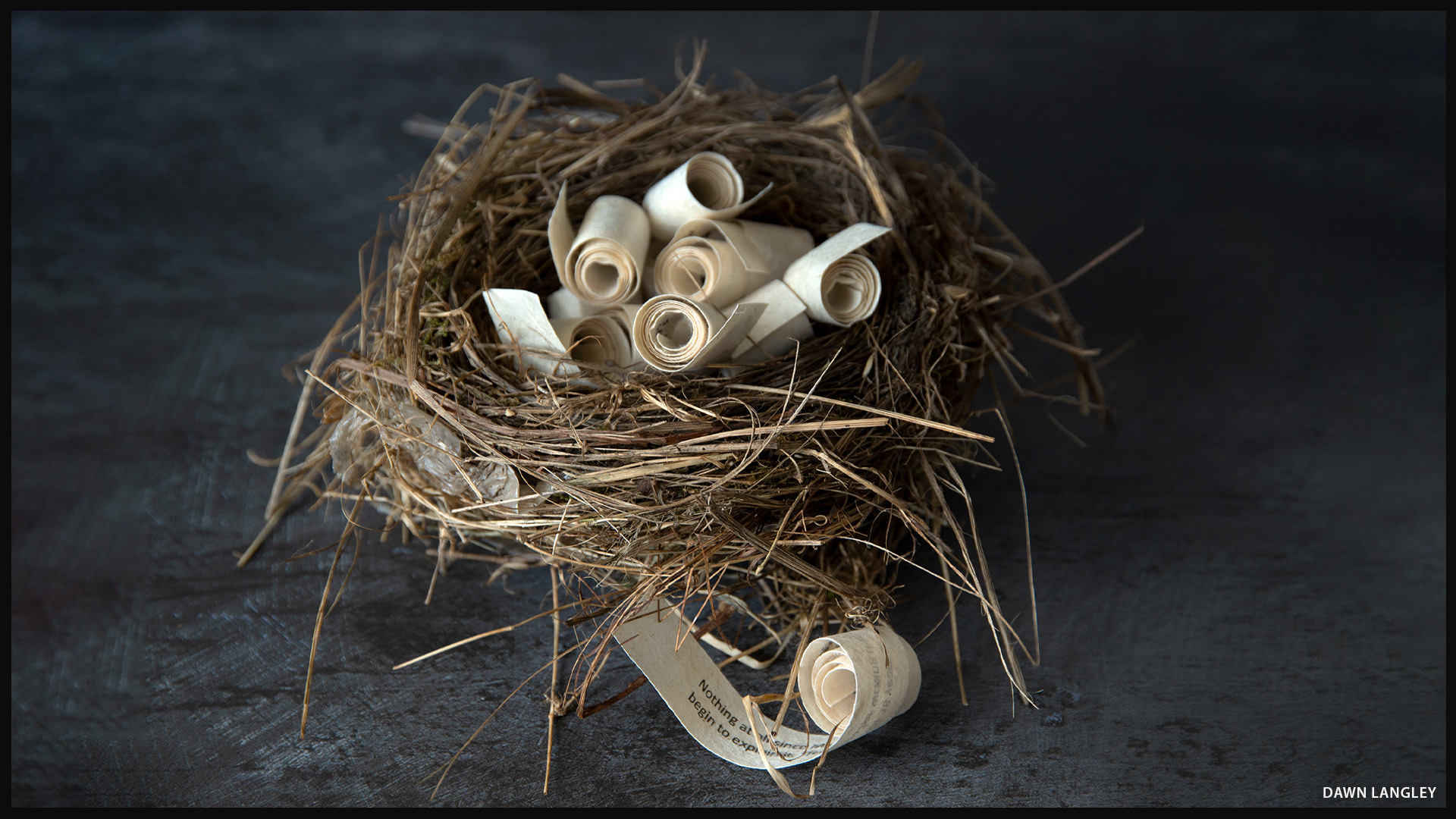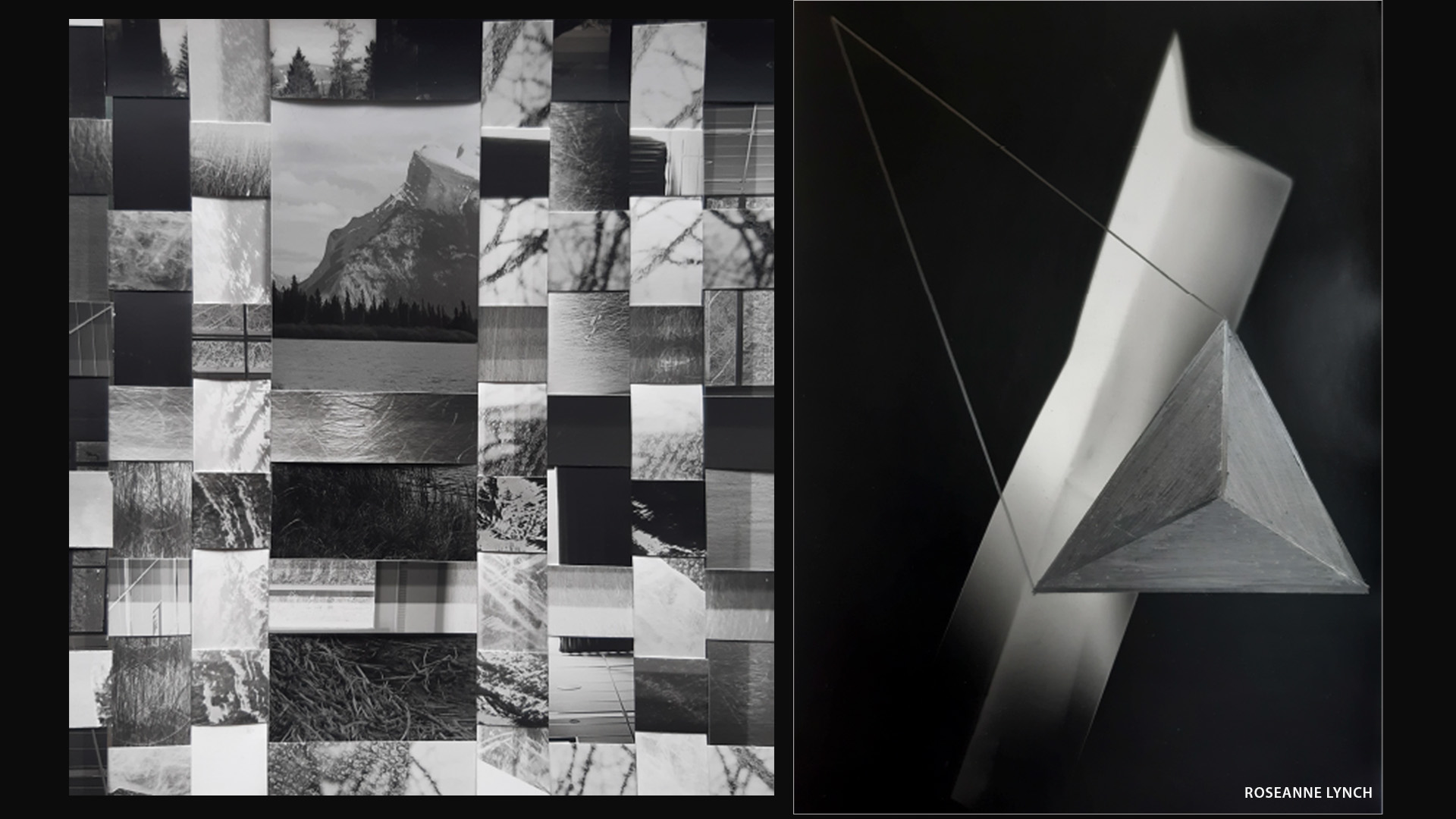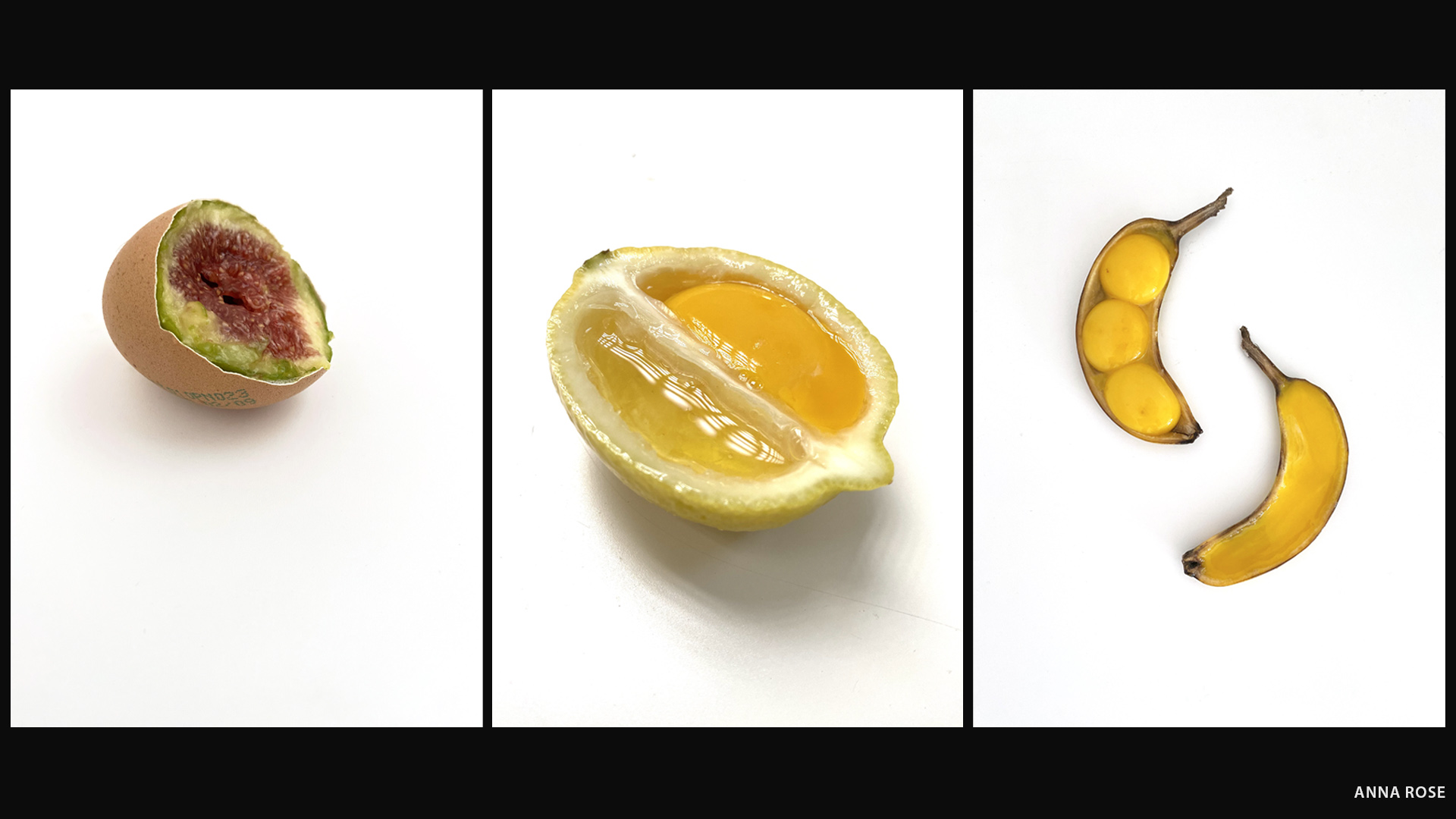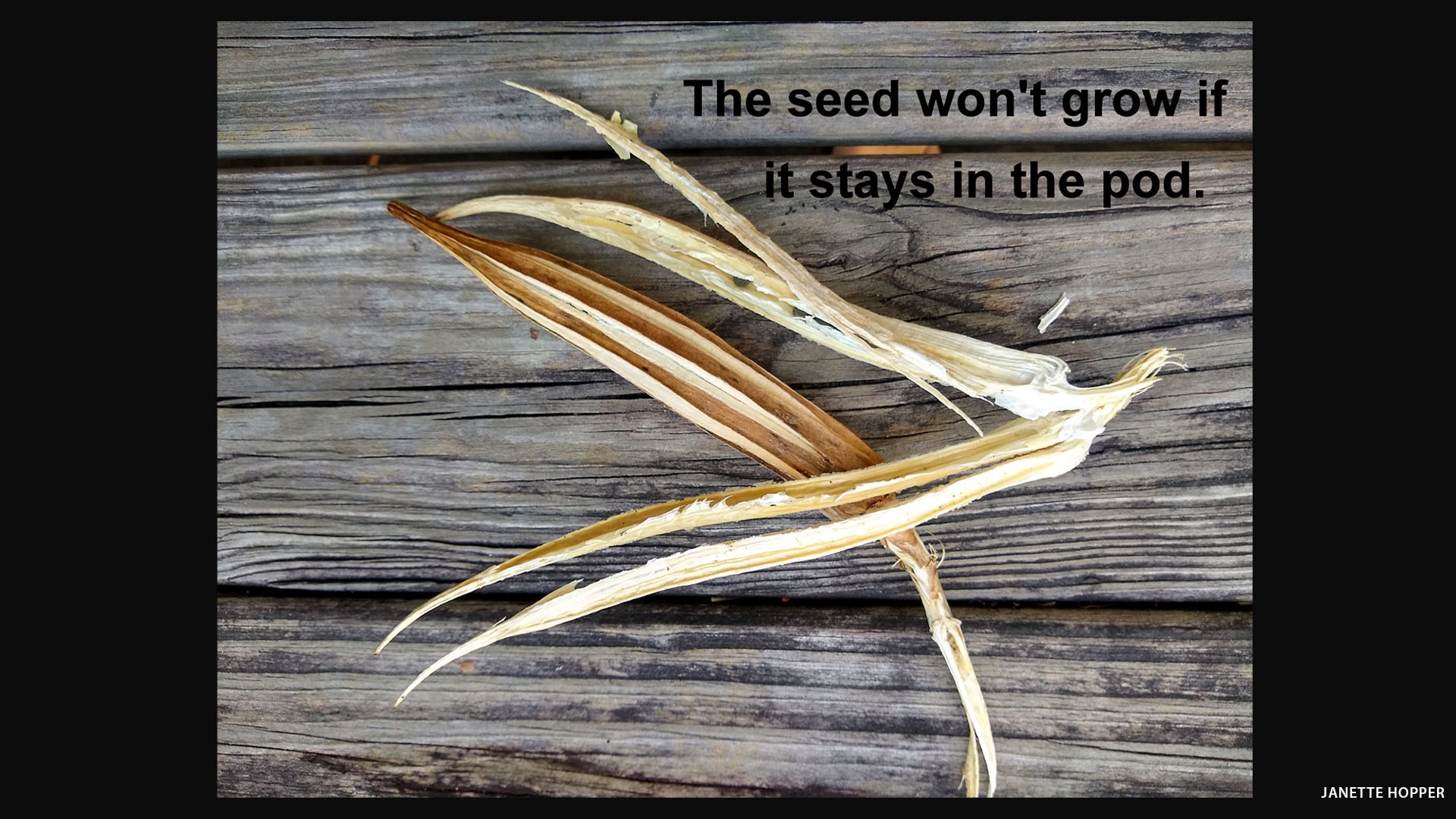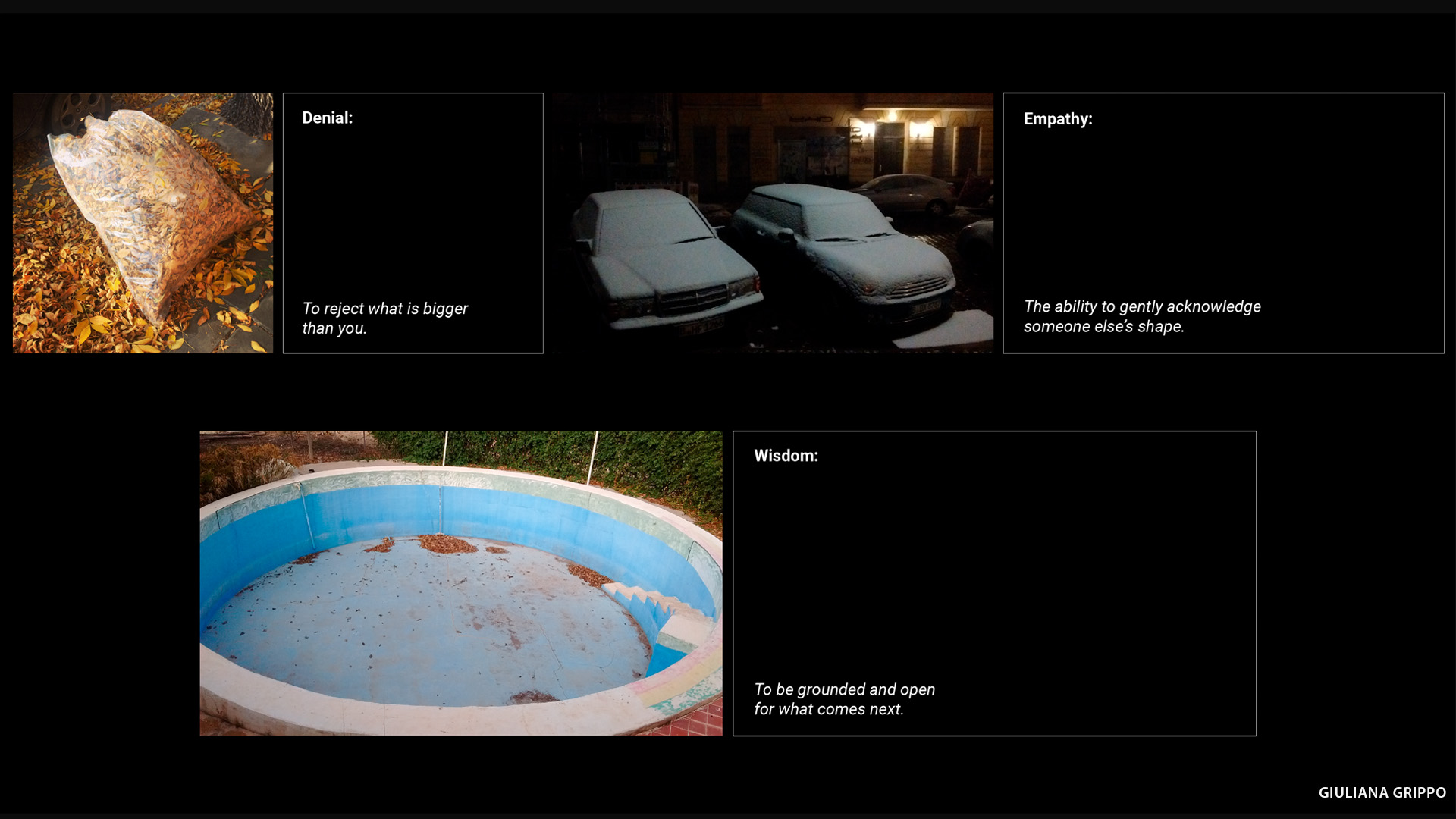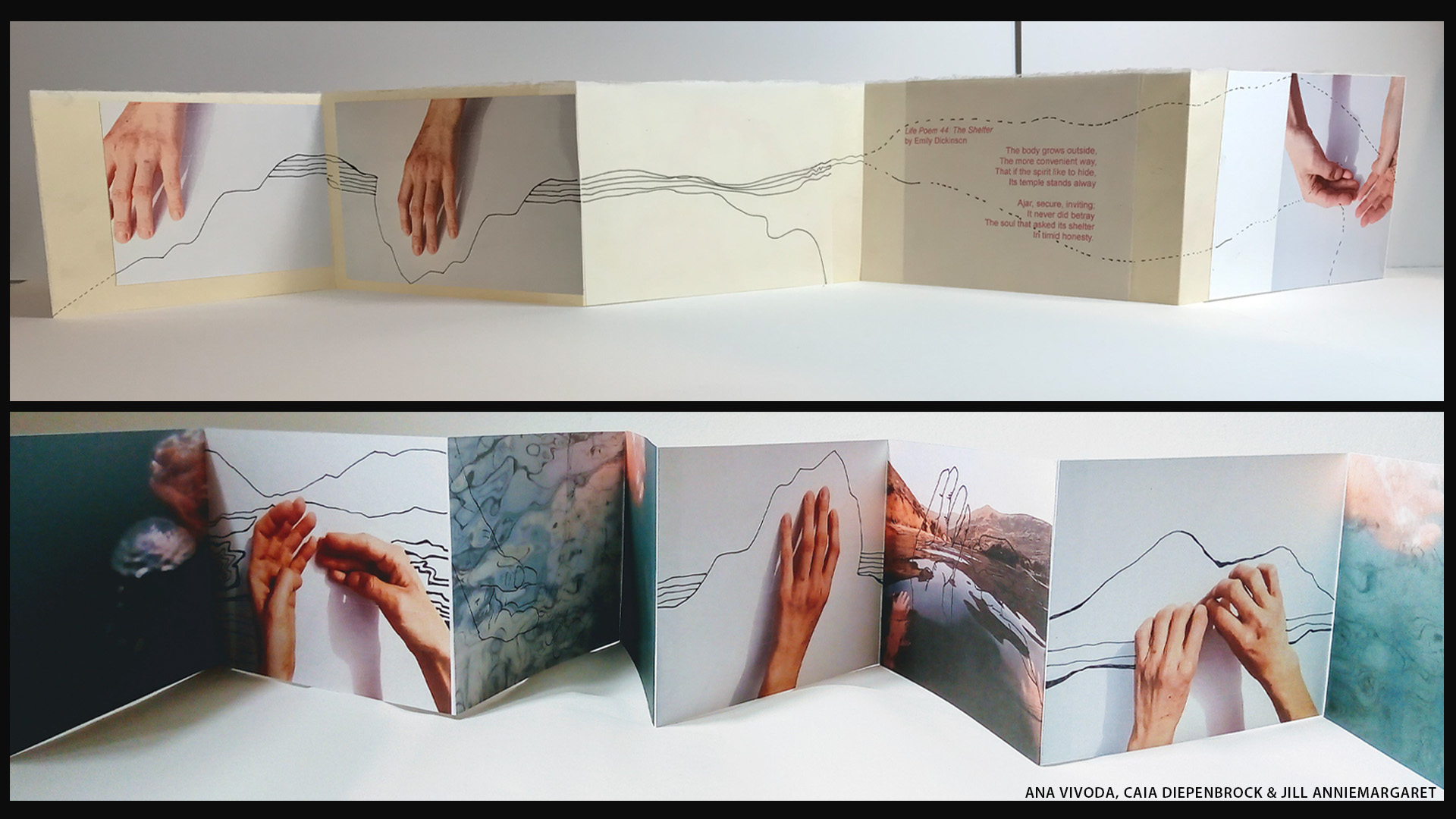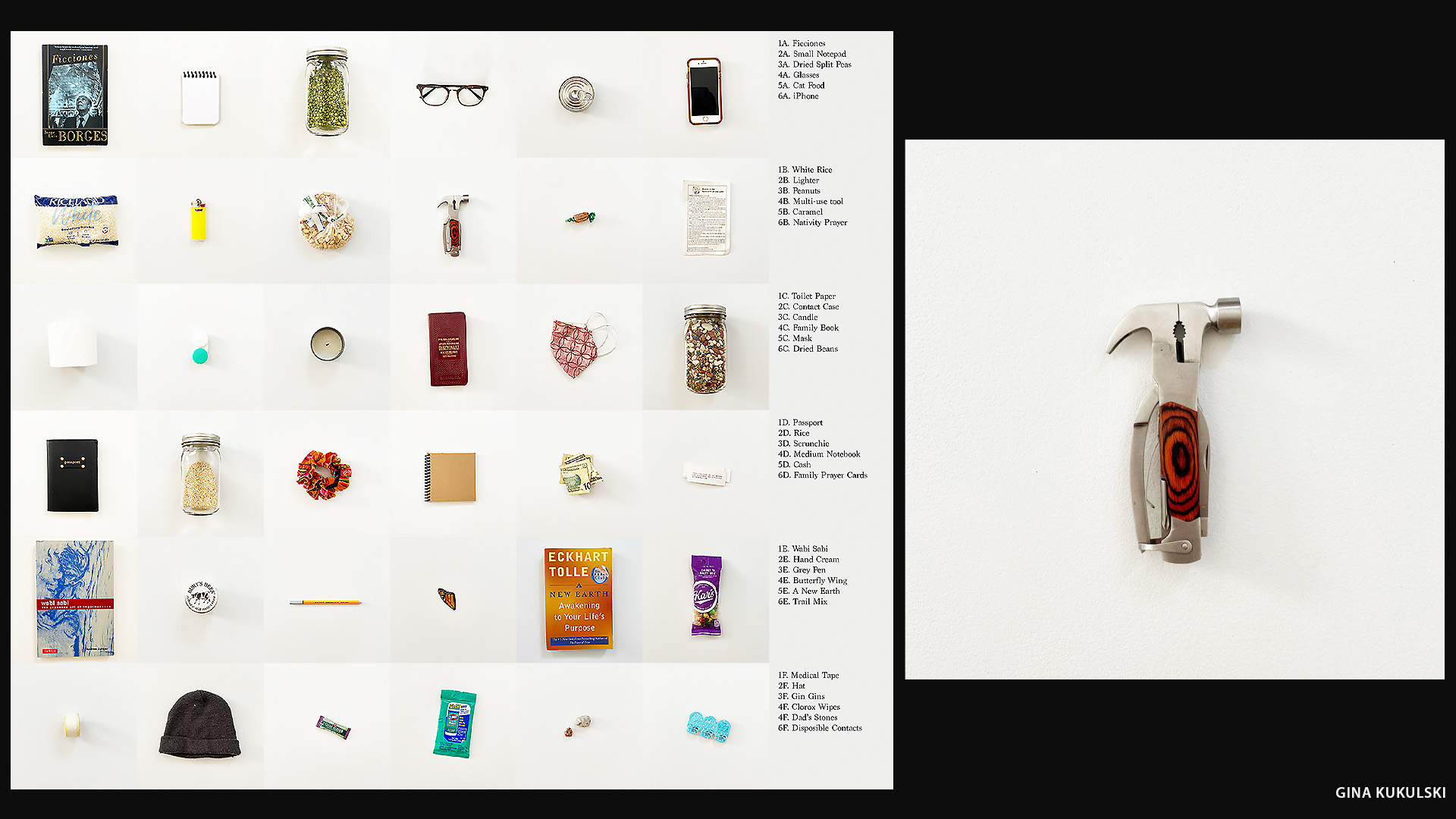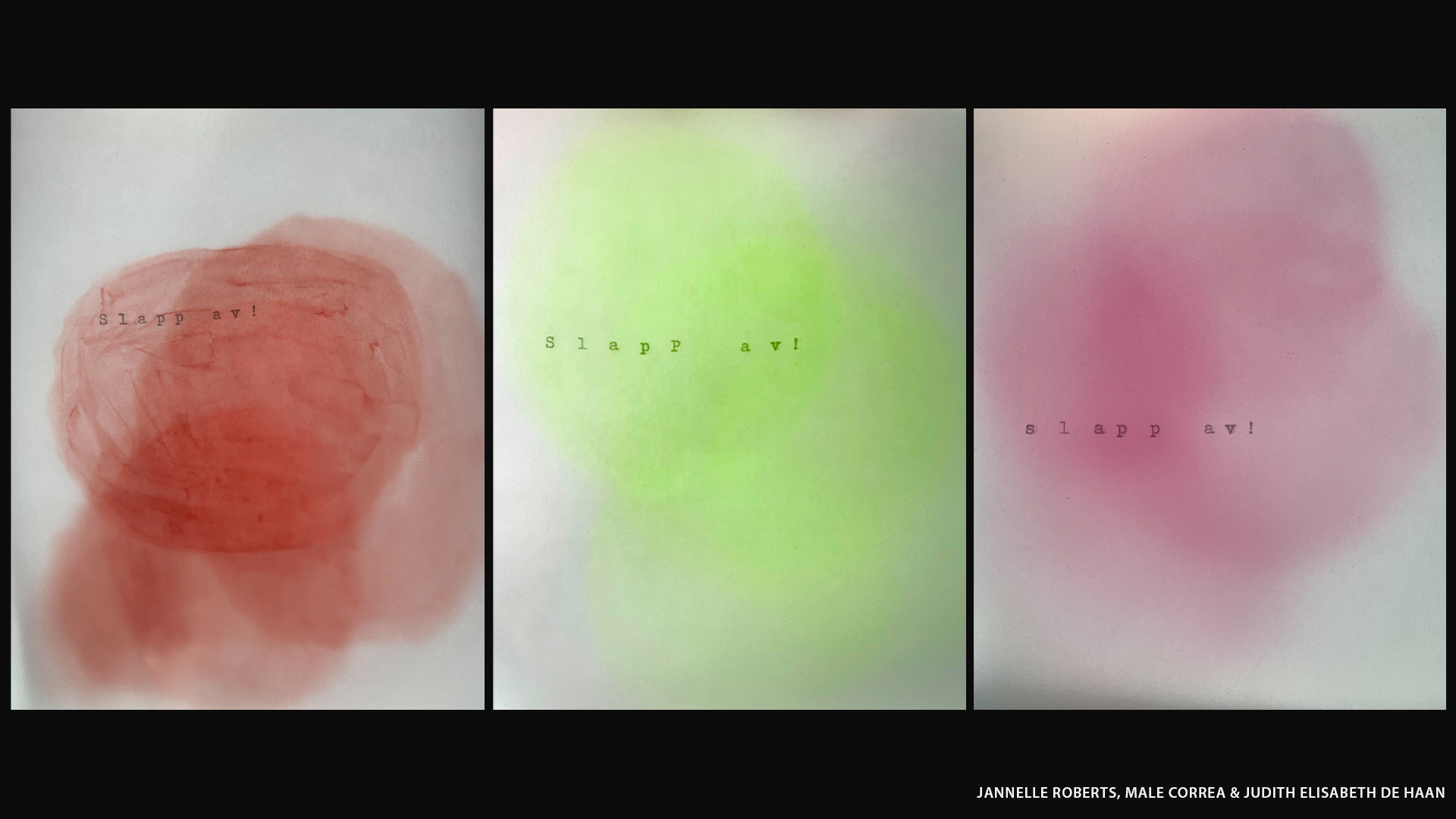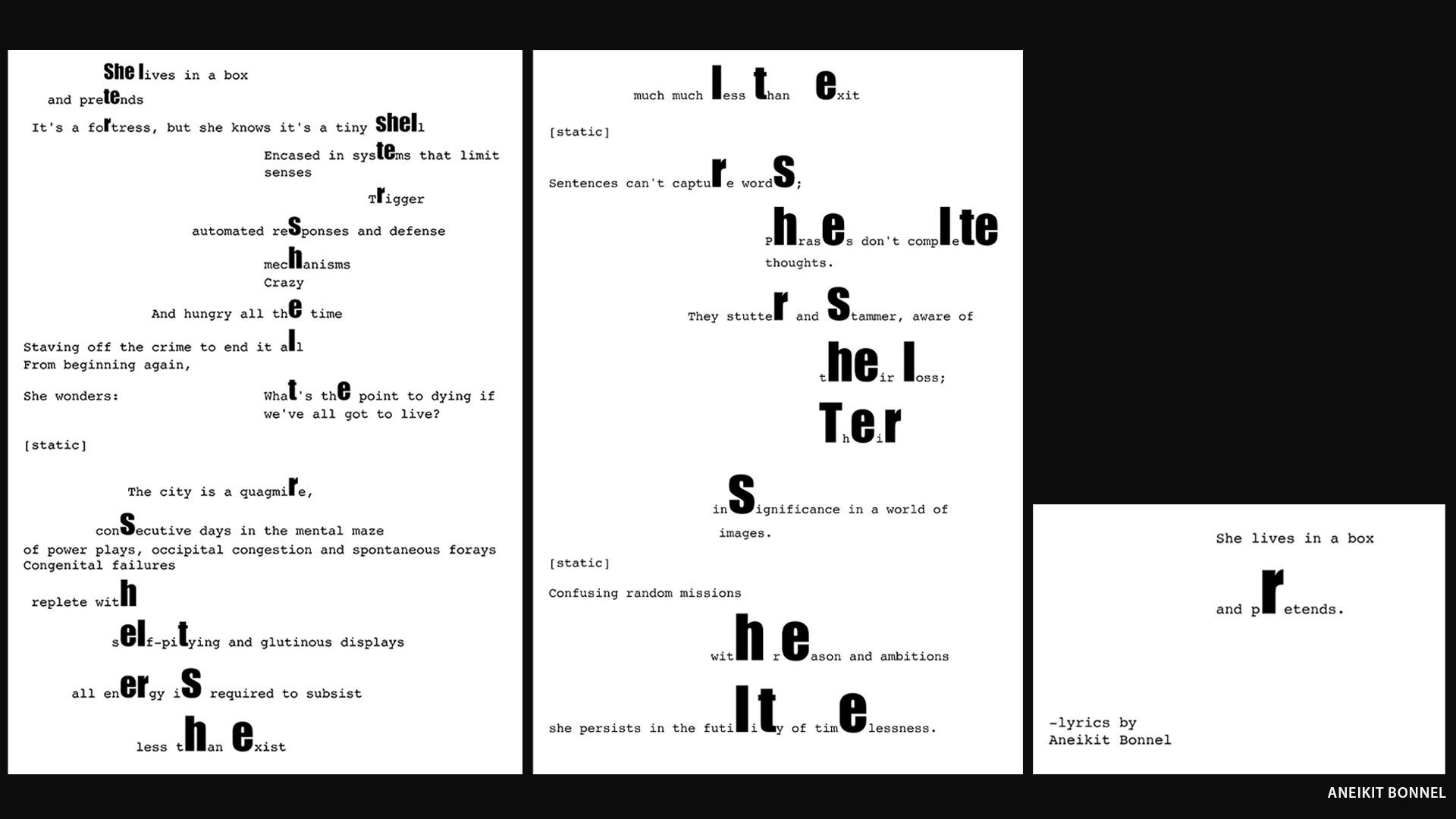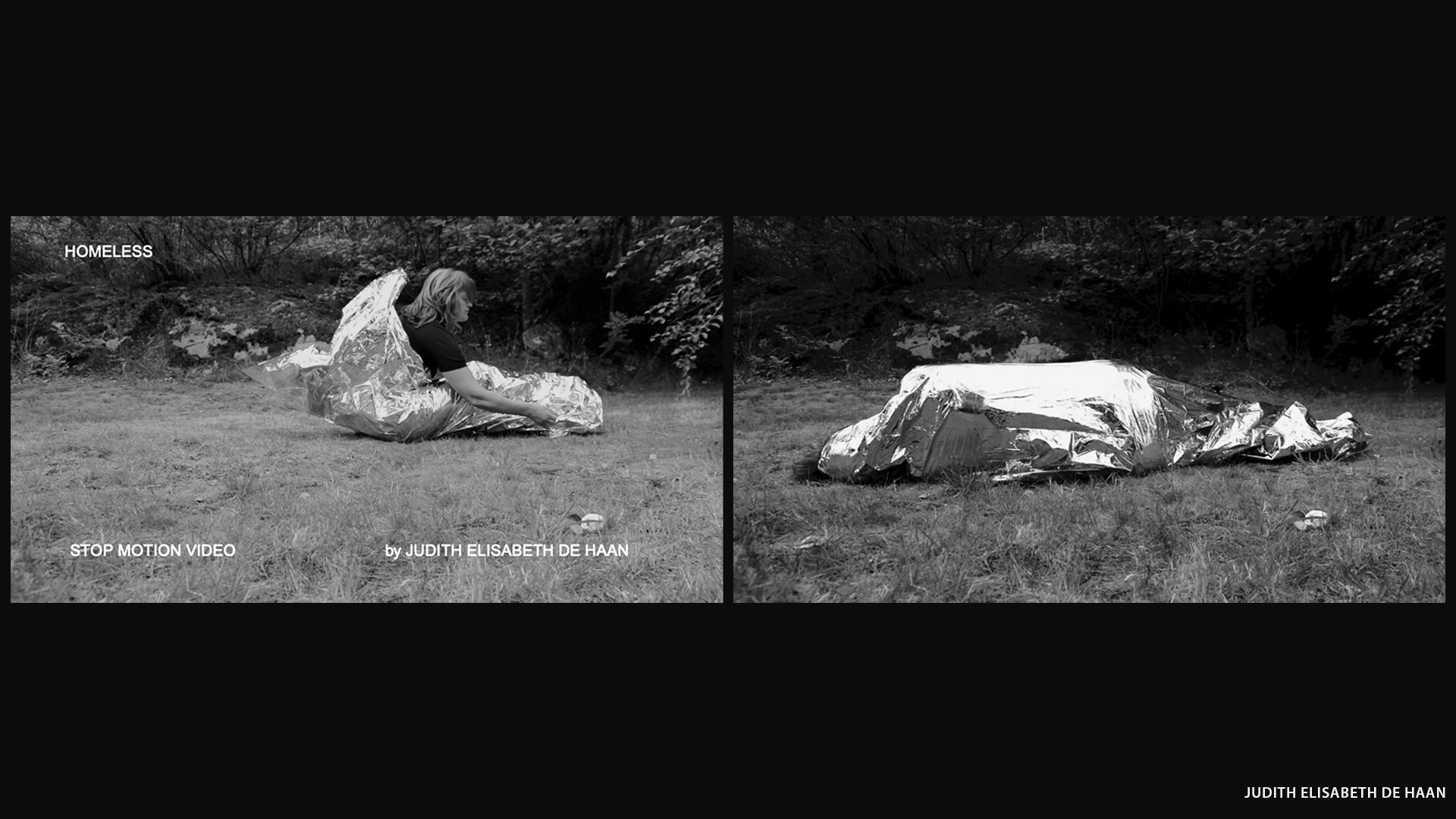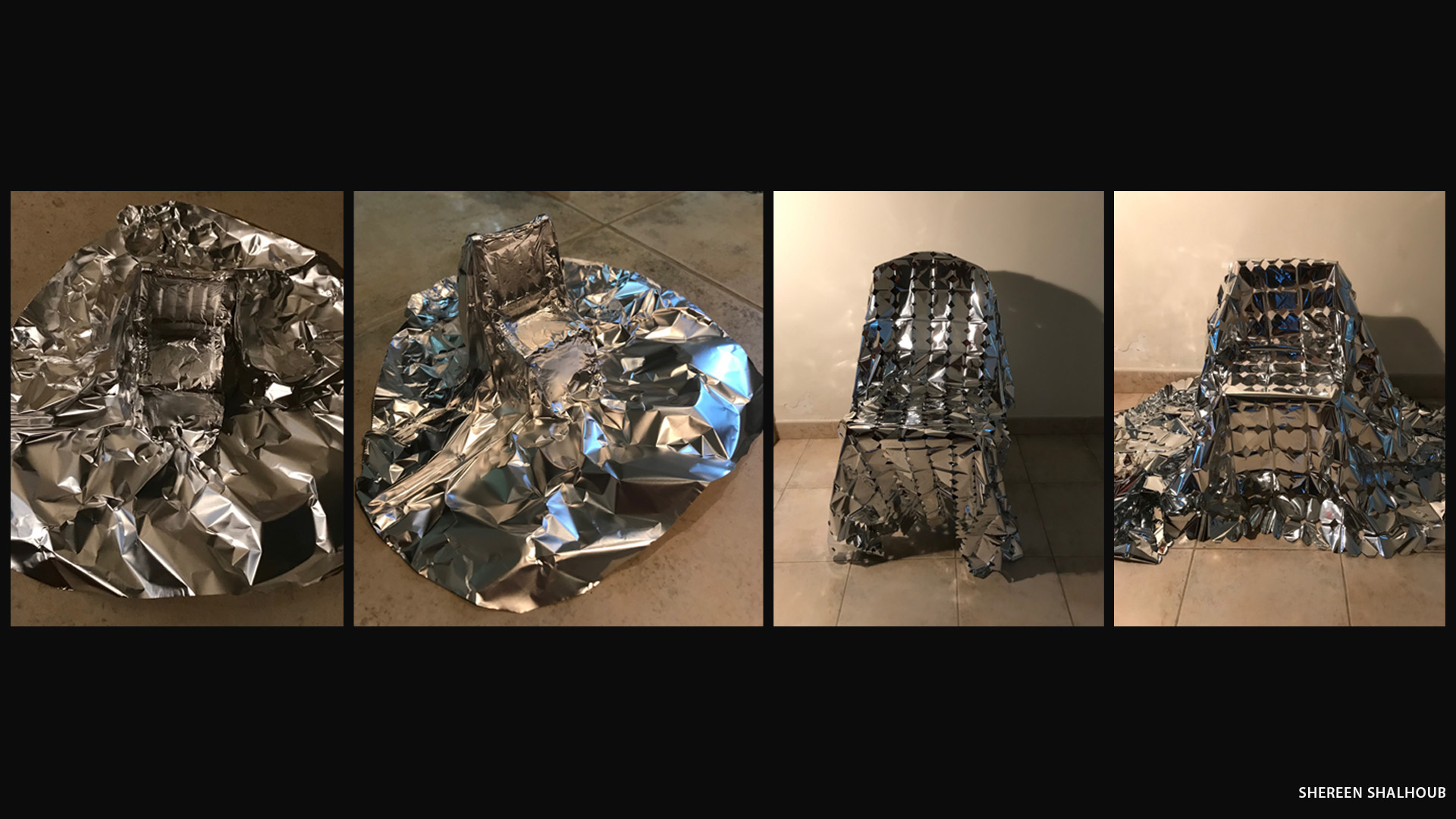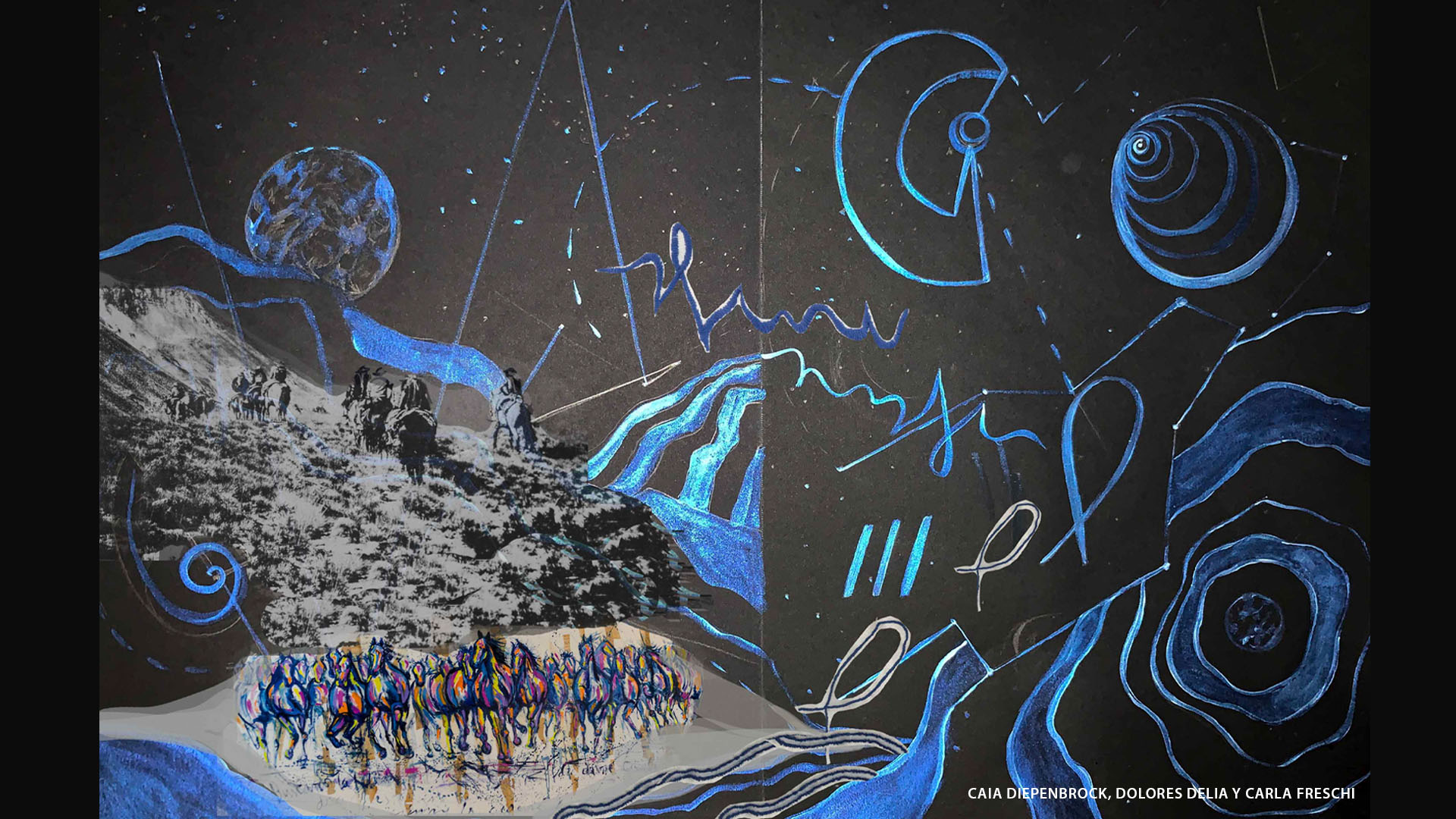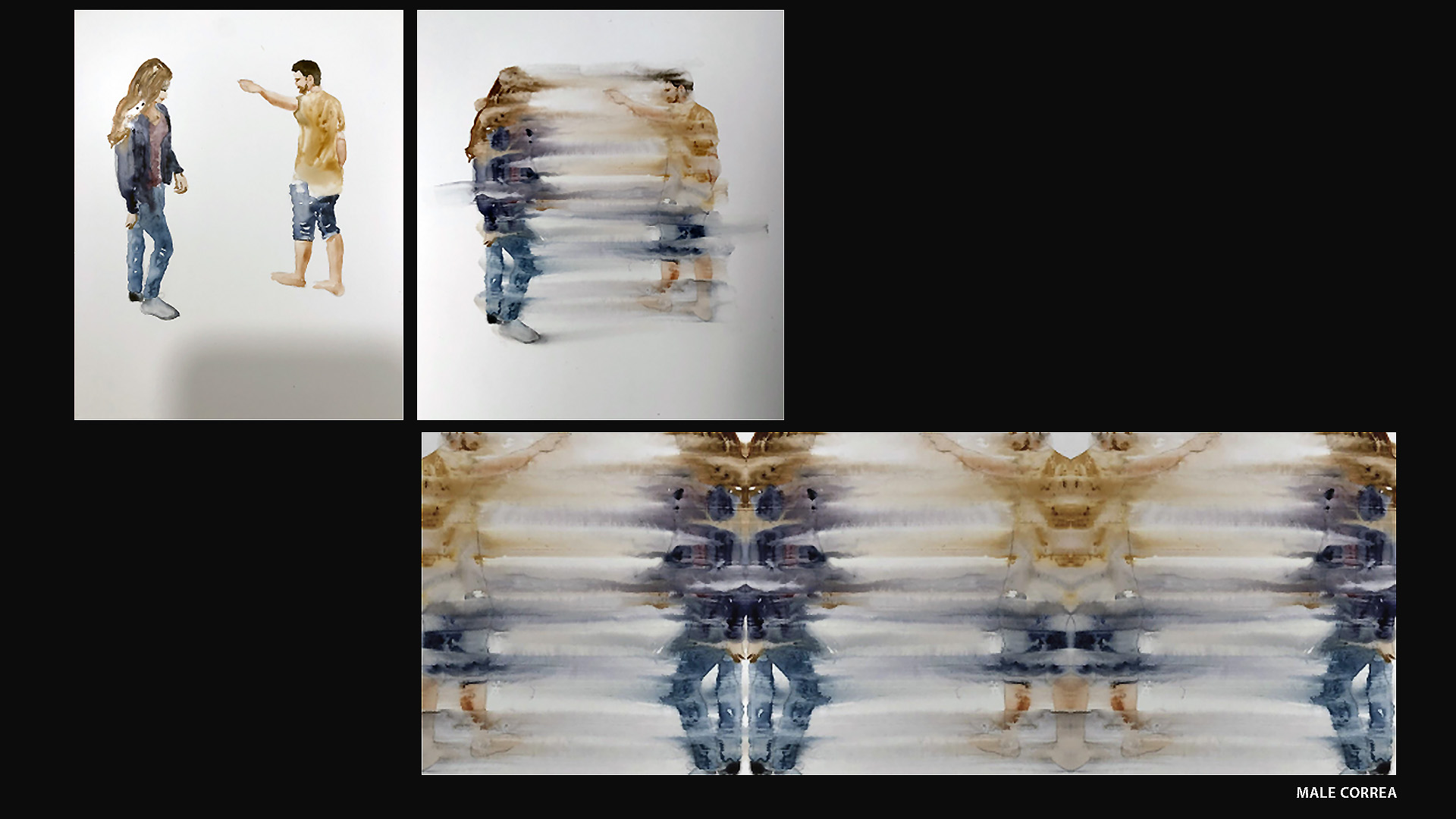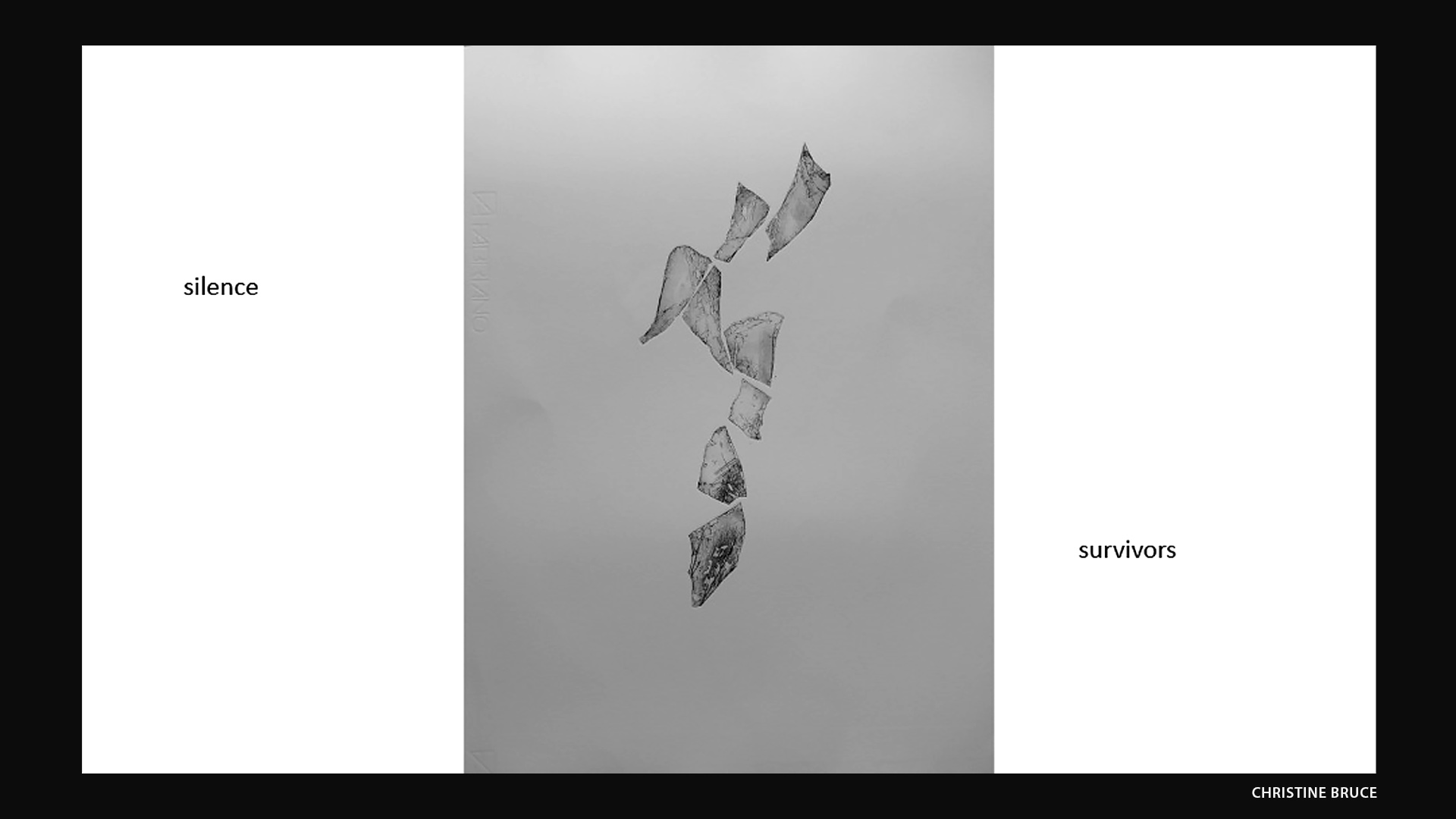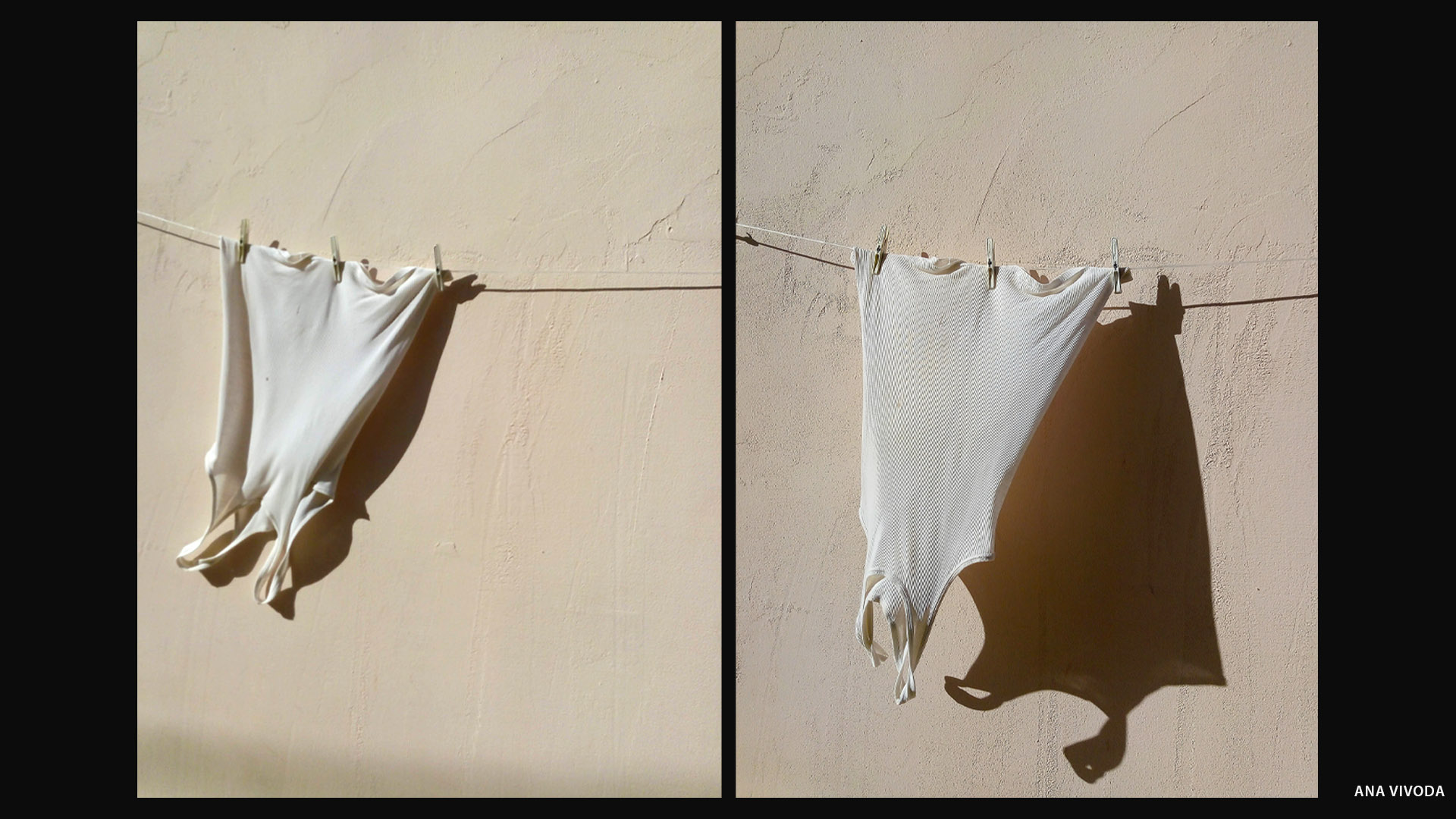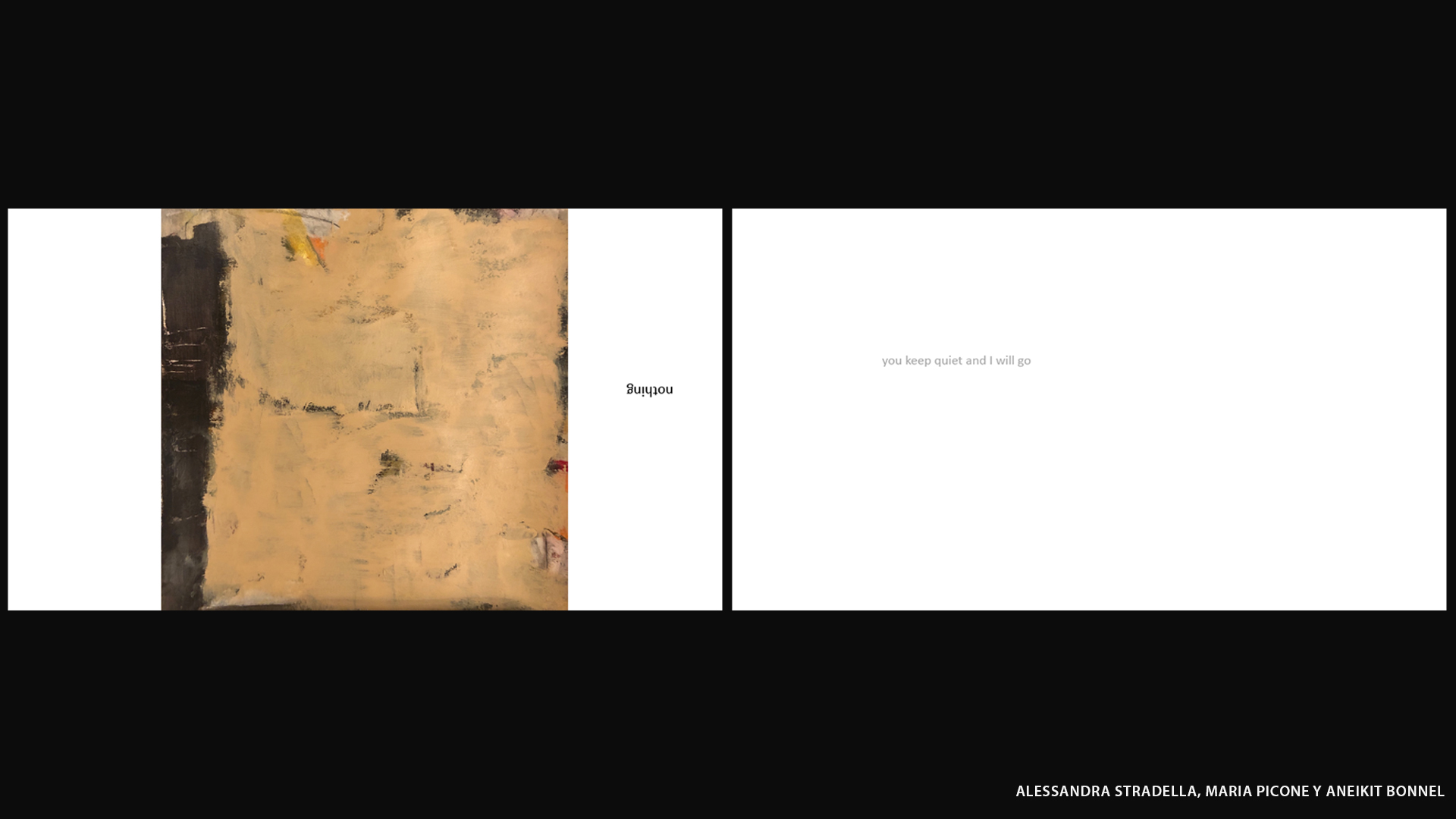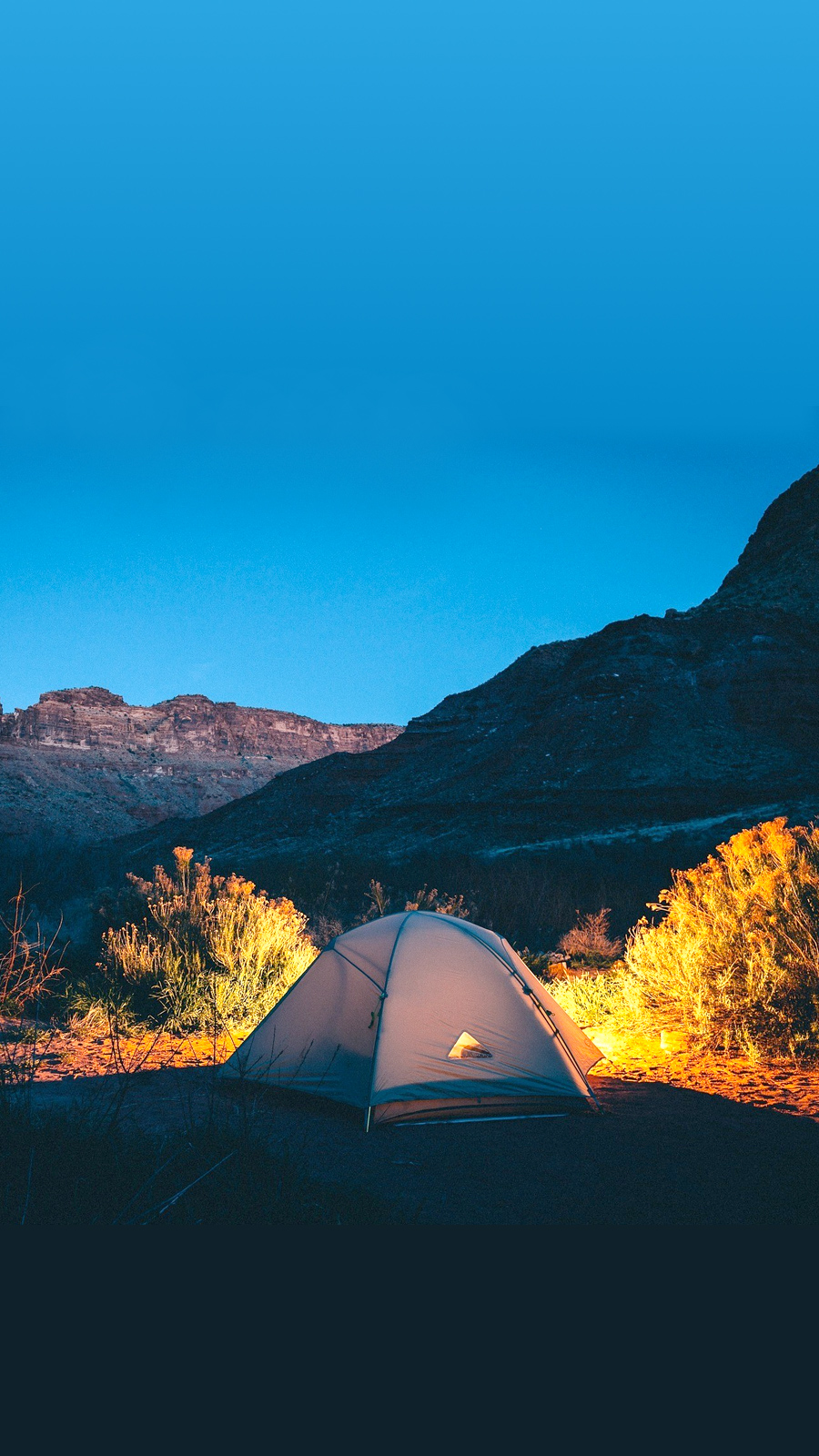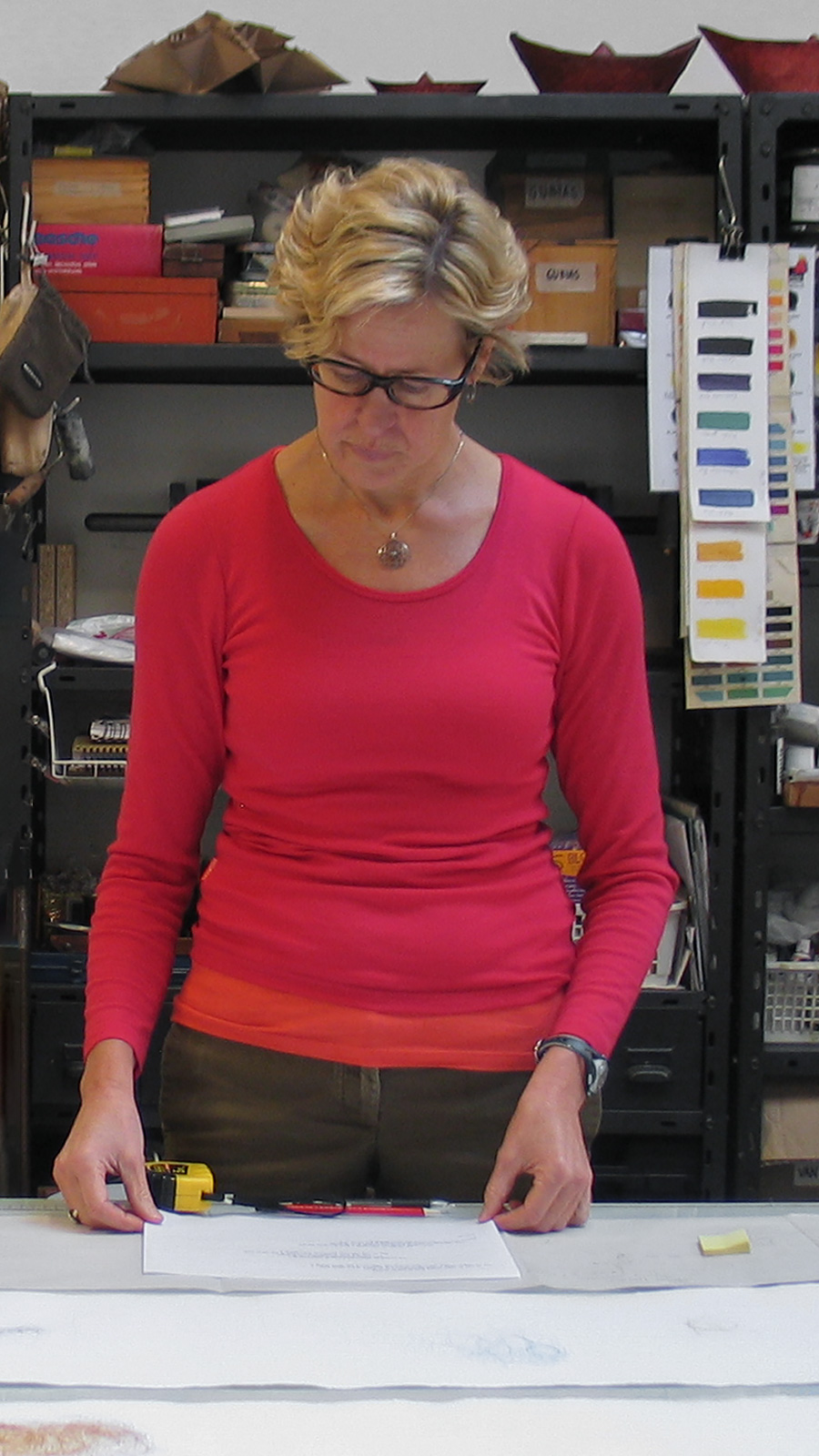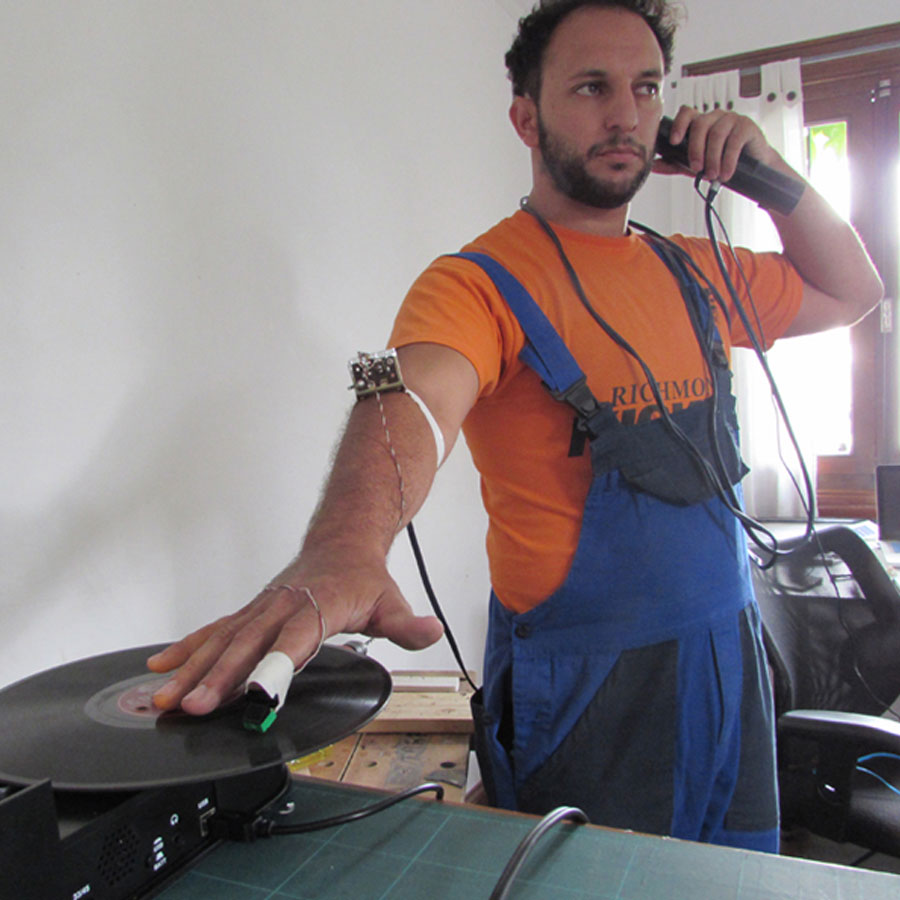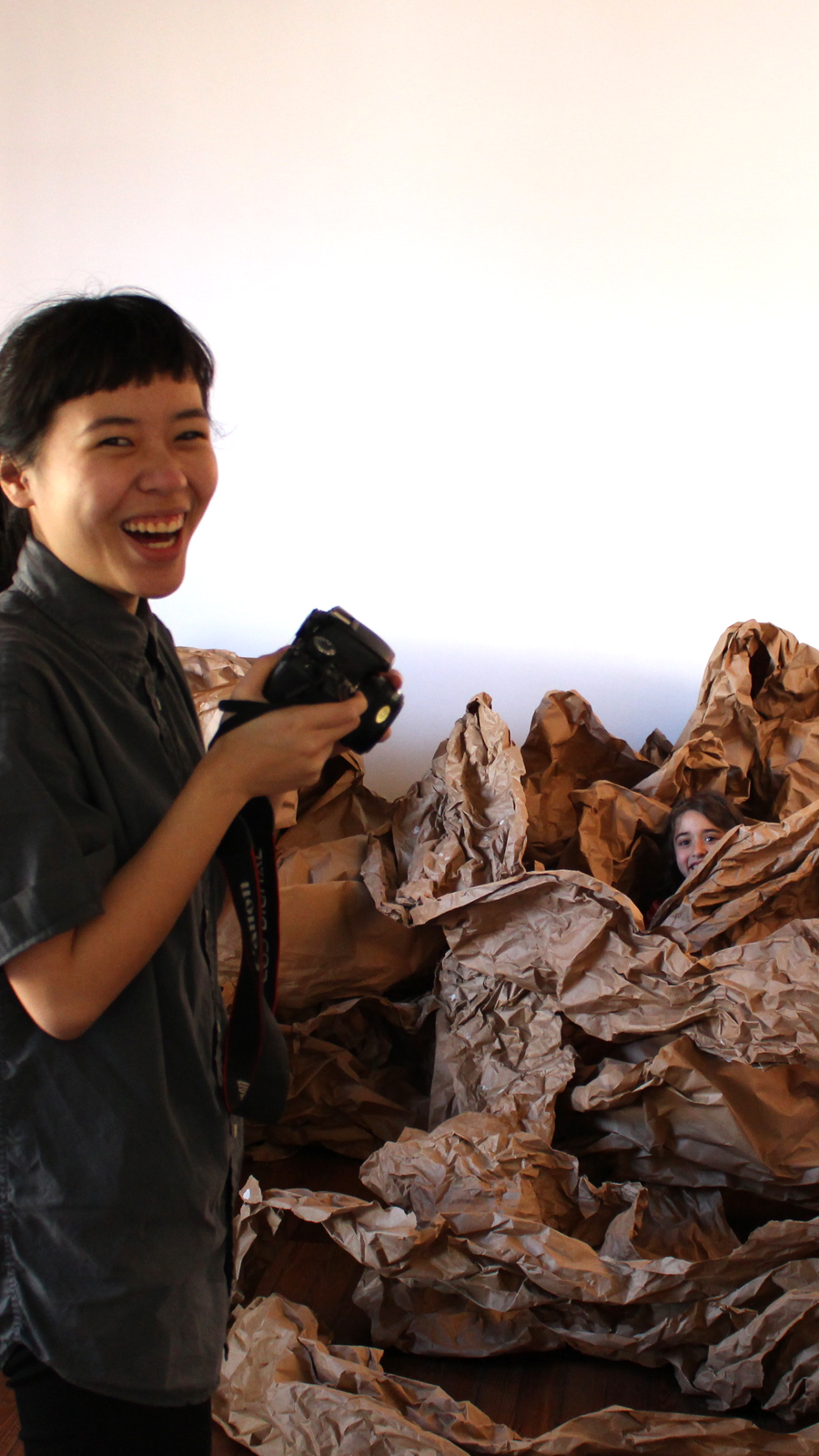Artists
Argentina
Giuliana Grippo
19.08.20 09.09.20
Giuliana is a visual artist from Argentina, currently based in Murcia, Spain. Her work oscillates between 2 dimensional and 3-dimensional pieces. Her practice is process-led, focused on exploring the fragility of the materials she chooses —she enjoys working with elements that are difficult to manipulate, and require a very gentle touch. In her objects and installations, she plays with natural structures as a means to talk about emotional negotiations and power dynamics hidden/implicit in our daily life.
GIULIANA ABOUT TOGETHER APART: #SHELTER
During´ace’s program Shelter, I focused on identifying the triggering aspects of my practice.
Based on the notion of Shelter as a safe place —a place to lower our guard— I reflected upon the manners, feelings, and negotiations that underly our daily relationships. I mapped some of them by assigning photos of encounters between natural and man-made elements. These images will serve as a guide/trigger point for future objects and installations.
“When hiking on a mountain, a shelter appears as a place to stop. A place to rest & contemplate, to reflect on the journey and what is still ahead. So yes, we decided to stop. We took time to think how our journey had felt so far. The weather was nice over there -sunny and warm on the other side of the screen.”
BIO
Giuliana Grippo
Argentina, 1990
Lives and works between Bs.As., Argentina and Murcia, Spain.
STUDIES
2014-2016 | Master of Theory and Research of Project Disciplines, University of Buenos Aires, Argentina.
2009-2013 | Graphic Design, University of Buenos Aires, Argentina.
EXHIBITIONS
2019 | Corpus de sentido, Alianza Francesa, Bs.As. Solo Exhibition.
2019 | After the wound, Centro Negra, Murcia.
RESIDENCIES
2020 | Intemperie Residencia, Argentina.
2019 | Archipelago Art Residency, Korpo, Finland.
2015 | AADK Spain, Murcia, Spain.
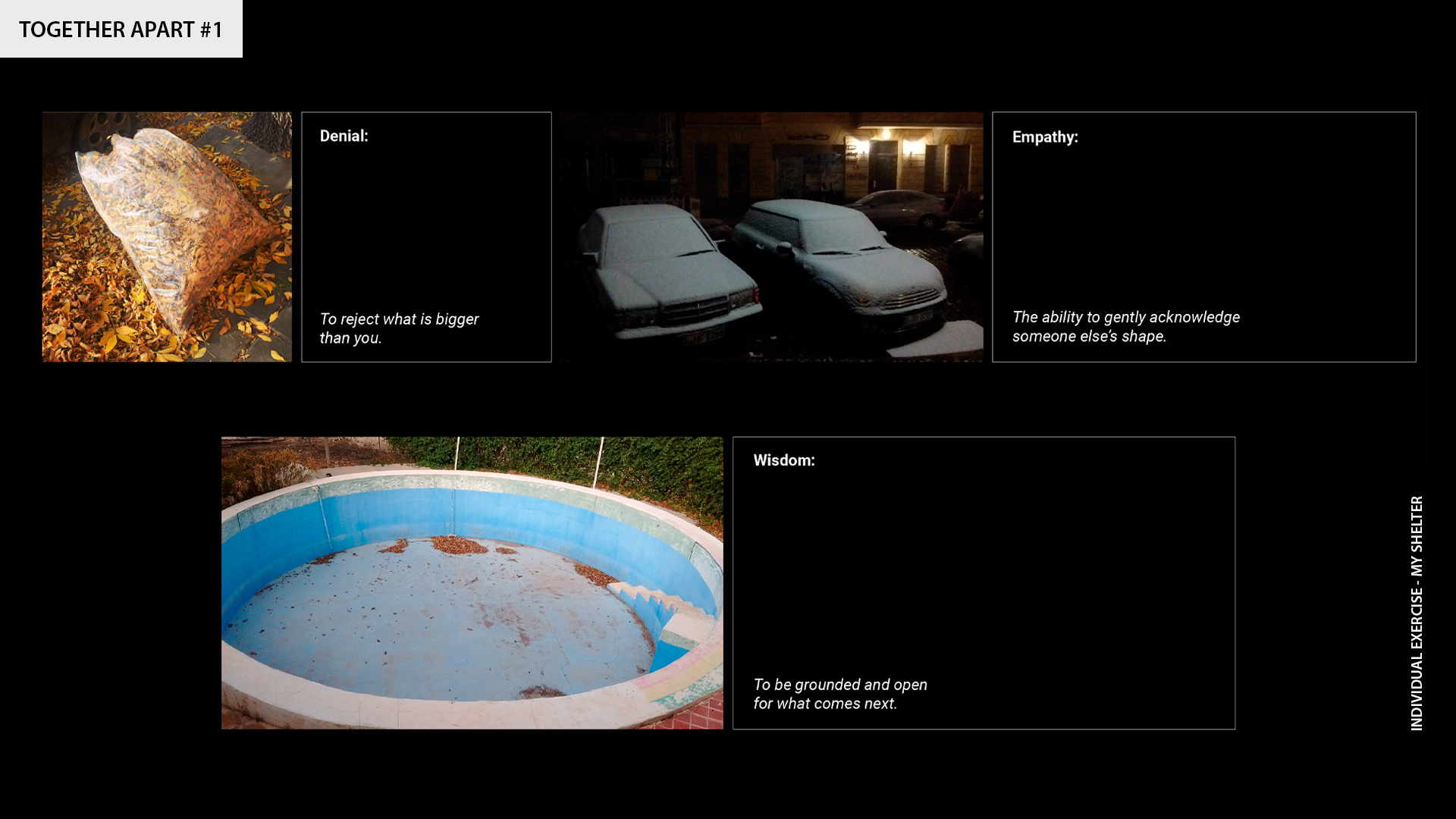
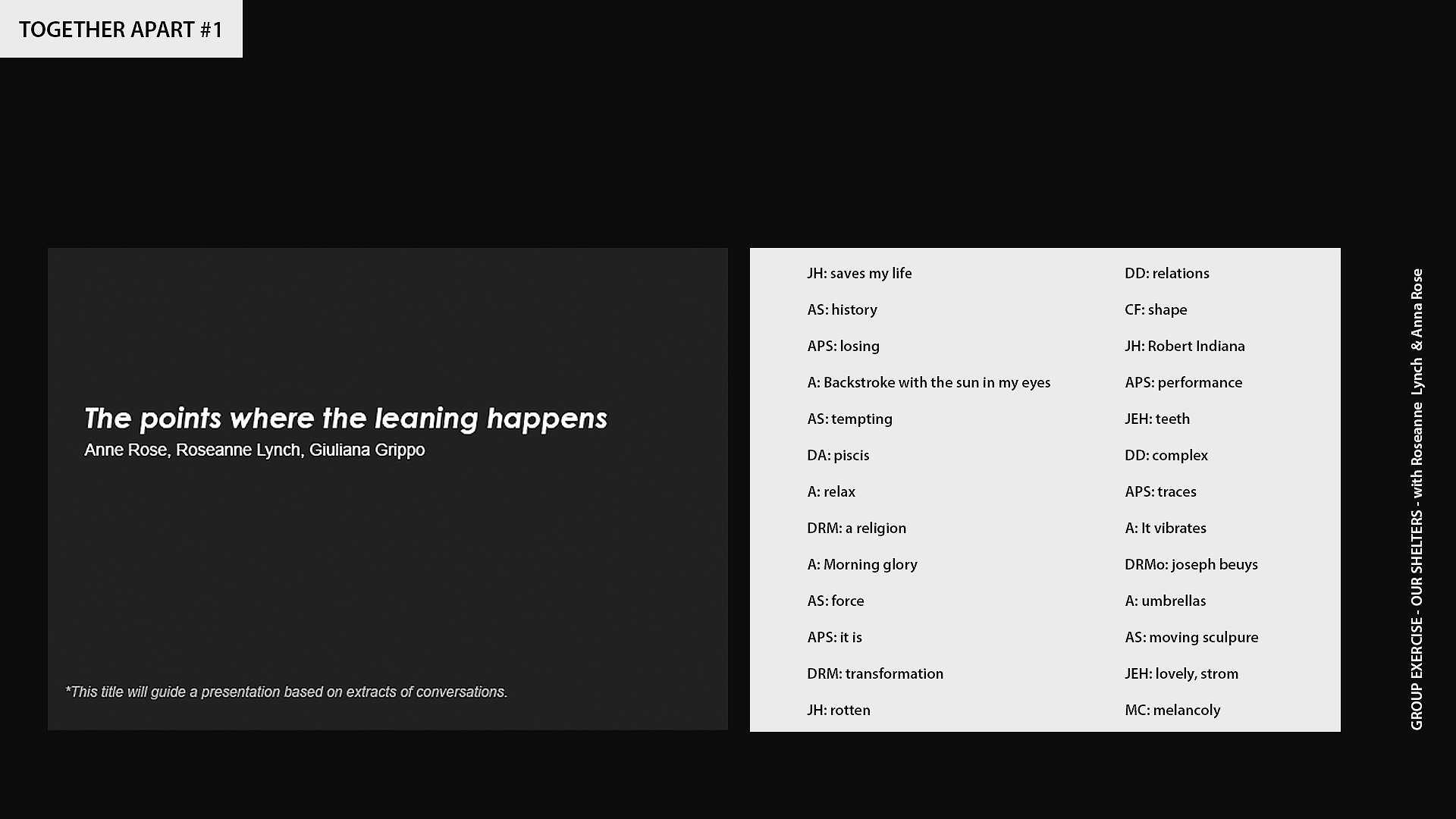
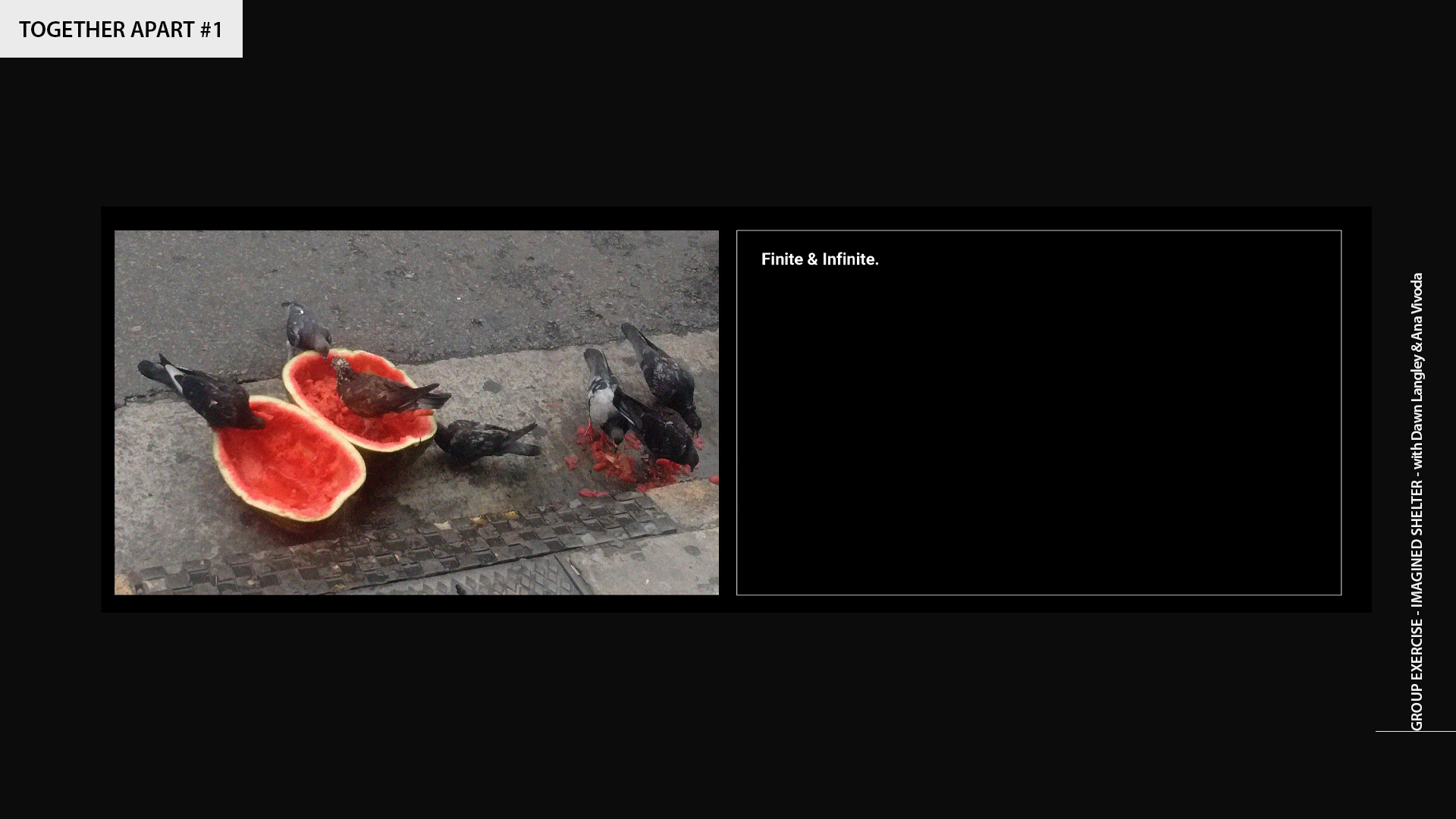
Related Activities
Exhibitions, Together Apart
#1 | SHELTER: results
Artists in dialogue
16.12.20
During 2020, we carried out the first two sessions of Together Apart. The first session took as a conceptual and practical framework the REFUGE and the second, the NEST.
Through those starting points, both of which refer to caring atmospheres and structures for coexistence, we were able to think and create in a wide variety of directions and layers. We reflected on our pandemic context, a situation for which we had to find ourselves in the virtual non-space, but also a situation thanks to which people from many different countries were able to work simultaneously.
Assuming this complex situation, more than 20 participants per session created new pieces –some in exercise format–, took up projects that they had already worked on in the past or collectively set out to create new projects that will continue to develop beyond the scope of our meetings.
Taking these refuge and nest issues also in their complexity, we asked ourselves questions that made each of the participants involve their personal experiences, memory, memories and experiences from each of their territories. We addressed questions that sought to keep us in constant movement; at times we went through very optimistic or pessimistic visions about the possibility or necessity of having a shelter or a nest, and at other times, we were able to articulate more complex visions, enduring in intermediate and liminal states. For both, we took as a theoretical structure of support and dialogue the thought of Félix Guattari presented in The Three Ecologies (1989). His ethical-political approach that highlights the molecular domains of sensitivity, intelligence and desire, as well as his articulation of the three ecological registers (environment, social relations and human subjectivity), helped us to expand our creations and thoughts in relation to shelter and nest.
During the first session, when asked about the conditions that a refuge can have and the conditions that we would like a refuge to have, the artists (coincidentally and by chance, we had a cohort one hundred percent comprised of women) generated sculptural pieces, artists’ books, photographs, videos, dance pieces and more, reflecting on the permeability or isolation structures that a shelter can have. Also, many artists started from their bodily memories to refer to the refuge and made improvisation and performance pieces. We created in relation to the refuge conditions presented by nature and the refuges that we create to protect ourselves from certain natural conditions. Memory as a refuge and shelters for memory also arose through textile practices or from the use of jewelry or objects with which we build links. Finally, the bonds and the community as spaces that shelter and spaces that imply care was another of the axes that we explored through pieces that included readings of texts and sound activations.
Together Apart has functioned as a program that opened up possibilities for meeting and collaborative creation. It has made possible the creation of new rhythms and synchronies for a limited time but whose reverberations and echoes continue to affect in unexpected directions.
Daniela Ruiz Moreno (curator-in-residency)
Related artists
- Alessandra Stradella
- Ana Vivoda
- Aneikit Bonnel
- Anna Rose
- Ariana Pirela Sánchez
- Caia Diepenbrock
- Carla Freschi
- Christine Bruce
- Dawn Langley
- Dolores Delia
- Gina Kukulski
- Giuliana Grippo
- Janette Hopper
- Jannelle Roberts
- Jill AnnieMargaret
- Judith Elisabeth de Haan
- Male Correa
- Roseanne Lynch
- Sara Minsky
- Shereen Shalhoub
